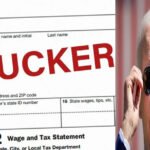By Andrew Moran
Many U.S. households are struggling to keep up with the growing cost of living as food and energy costs skyrocket.
In June, the Consumer Price Index (CPI) revealed that food prices advanced 10.4 percent, with many staples rising double digits from a year ago. Bread prices rose 10.8 percent, chicken climbed 18.6 percent, eggs soared 33.1 percent, and milk increased 16.4 percent.
Bureau of Labor Statistics (BLS) data also highlighted the 41.6 percent jump in energy costs, which included a 98.5 percent spike in fuel oil, a 60 percent boost in gasoline, and a 13.7 percent rise in electricity.
While price inflation affects everyone, research reveals that the financial pressures of a sweltering broad-based CPI are being felt differently across the country.
Blacks, Hispanics Bear the Brunt of Inflation
A recent report from the Federal Reserve Bank of New York (FRBNY) assessed the annual inflation rate for the major consumption categories, clocking in at 9.2 percent in May. This was higher than the official CPI rate of 8.6 percent.
When the calculations are adjusted for spending levels—Hispanic and black Americans will spend more on transportation and less on entertainment and health care compared to white and Asian Americans—inflation was higher for Hispanics and blacks. Researchers at the New York Fed Bank reported that the inflation rate for Hispanics was 0.6 percentage points higher than the overall rate, while blacks faced an inflation rate that was roughly 0.2 percentage points higher. For Asian Americans, it was approximately 0.5 percentage points less. The inflation rate faced by whites was about the same as the federal government’s CPI.
“We find that, in contrast to inequalities in employment rates, disparities in inflation rates have widened during the recent inflationary episode, with Black and Hispanic Americans experiencing more inflation,” the report stated.
“[W]hen overall inflation began rising in March 2021, inflation disparities surged, with Black and Hispanic Americans experiencing higher inflation than the national average and Asian Americans experiencing lower inflation. These disparities are more than twice as large as those observed during 2019,” the researchers added.
The latest Energy Information Administration (EIA) survey discovered that 34 million U.S. households had a hard time paying energy bills in 2020. The report, published earlier this month, revealed that energy costs disproportionately affected some communities more than others.
In 2020, for example, before energy costs had skyrocketed, more than half (52 percent) of black respondents said they faced energy insecurity. Forty-seven percent of Hispanic and Latino survey participants also recorded the same challenges.
In March, a Wall Street Journal poll found that 58 percent of respondents noted that inflation was creating notable financial strain.
Within the newspaper’s survey results, 35 percent of non-white voters reported that inflation would cause a substantial financial strain on their lives. Twenty-eight percent of white voters revealed the same sentiment.
The newspaper’s study also noted that nearly half of people earning less than $60,000 said inflation could cause problems.
This is comparable to a late 2021 Gallup poll that confirmed low-income households were more likely than high-income households to concede that inflation would be a significant hardship “that affects your ability to maintain your current standard of living.”
“At the bottom of the income distribution, some people don’t even have bank accounts—they work on cash. These are the people who are hit the most,” wrote Juan Pablo Nicolini, a senior research economist at the Minneapolis Fed, in a recent paper.
Higher Prices Impacting Rural America
Inflation is a larger problem for rural communities than urban areas, according to a new in-depth study from the Iowa Small Towns Project at Iowa State University.
The study, titled “Impact of Inflation on Rural Household Expenses, 2021-2022” (pdf), reported that rural household expenses had advanced 9.2 percent in 2022, while earnings edged up just 2.6 percent.
“The current wave of inflation over the past two years has made rural families more vulnerable than urban ones to rising gasoline prices, higher fuel costs to heat their homes, and their ability to purchase less-expensive used cars,” the study authors wrote. “Increased transportation costs are especially worrisome. Rural people have longer commutes to work, have to travel farther for daily needs like grocery shopping, and have to drive to larger cities for education and healthcare services.”
Researchers also spotlighted that prices for automobiles, energy, telecommunication services, medical and pet services, and health insurance are rising faster in rural communities than in urban centers.
Ninety-one percent of rural households’ income was consumed by living expenses, leaving just $5,400 in expendable income. Urban households enjoyed a little more than $14,000 for any unforeseen expenses outside of their monthly budgets.
Fighting Inflation Through Layoffs?
The Federal Reserve has been fighting price inflation by raising interest rates. The U.S. central bank is poised to bring the benchmark fed funds rate to at least 3.25 percent by the year’s end.
Experts warn that these inflation-busting efforts will still impact low-income consumers because they must contend with elevated inflation and higher borrowing costs simultaneously. A rising-rate environment can make it harder to obtain credit, borrow money, or service debts. This can ultimately result in lower demand and potentially a recession, because consumers will have less money to spend in an economy that is two-thirds consumption.
The 75 basis-point rate hike last month already added an estimated $3.2 billion this year to existing credit card debt, according to WalletHub, a personal finance website. This is in addition to the extra billions of dollars from the previous rate increases.
But while the labor market continues to remain “hot,” Fed Governor Chris Waller told the Economic Club of Minnesota in May that the same people most affected by surging prices would be more likely to lose their jobs during the institution’s tightening cycle.
“We’re trying to lower the inflation tax on everybody, but there’s a small section of the society that may bear the brunt of that by losing their jobs,” he said. “There is no magical formula in a textbook that tells you how to do it. You kind of have to take your chances and see where it goes.”
Fed Chair Jerome Powell, when speaking to reporters following the Federal Open Market Committee policy meeting in June, explained that the central bank does not intend to “put people out of work.”
“Of course, we never think too many people are working and fewer people need to have jobs. But we also think that you really cannot have the kind of labor market we want without price stability,” he said.
The Fed’s Summary of Economic Projections shows that the median unemployment forecasts were revised higher: 3.7 percent for 2022, 3.9 percent for 2023, and 4.1 percent for 2024 (pdf). As of this writing, the jobless rate stands at 3.6 percent.






